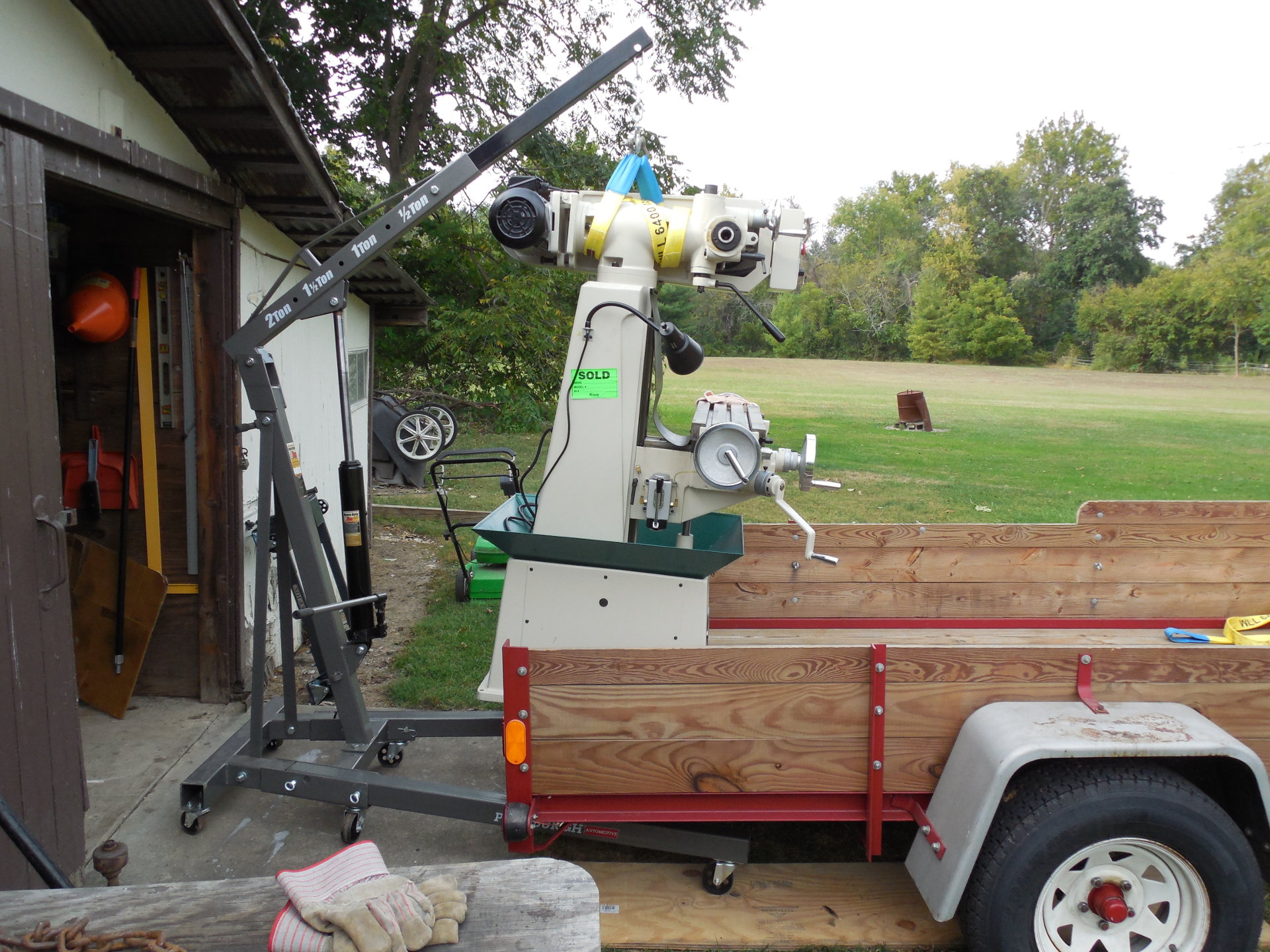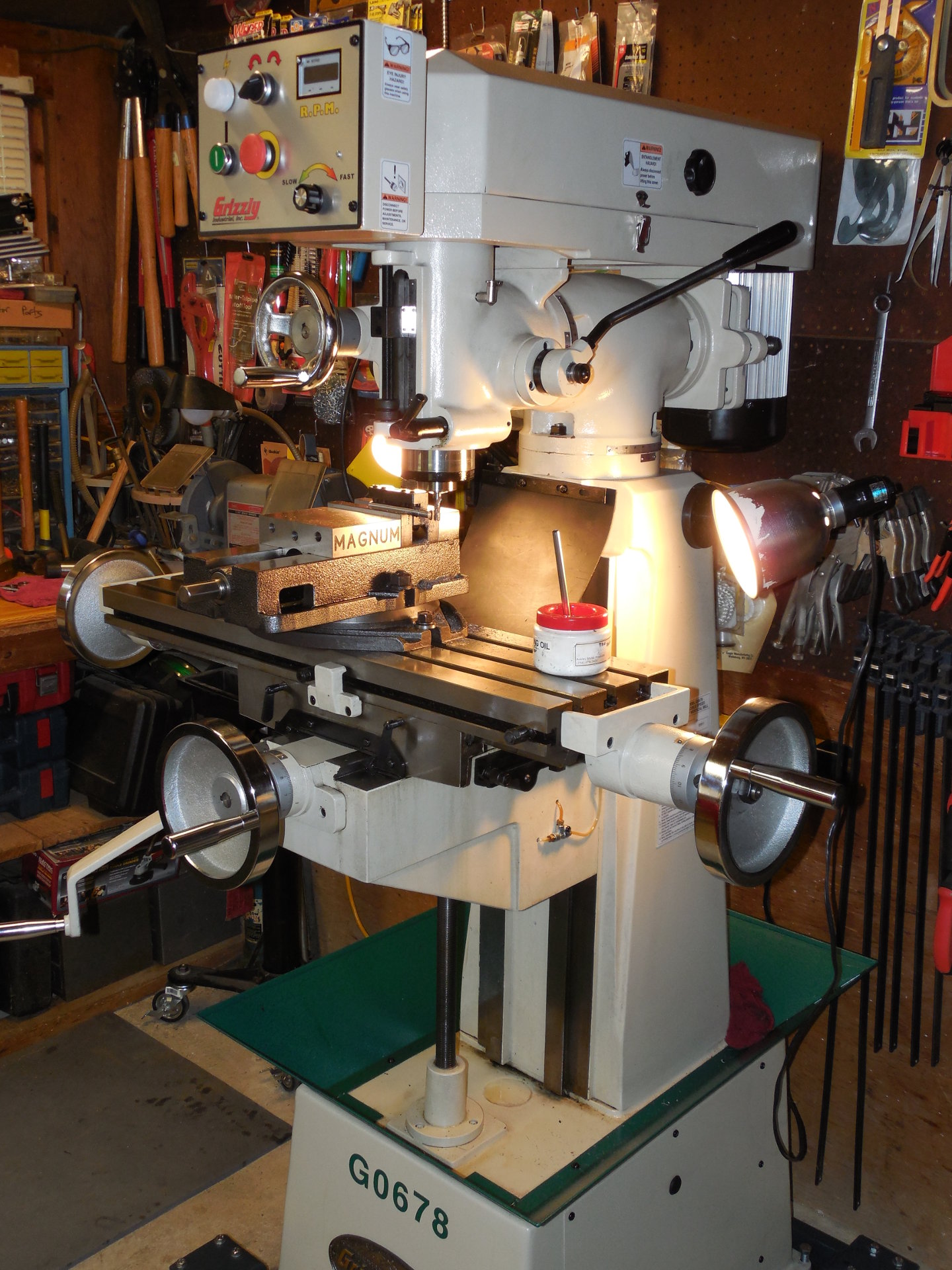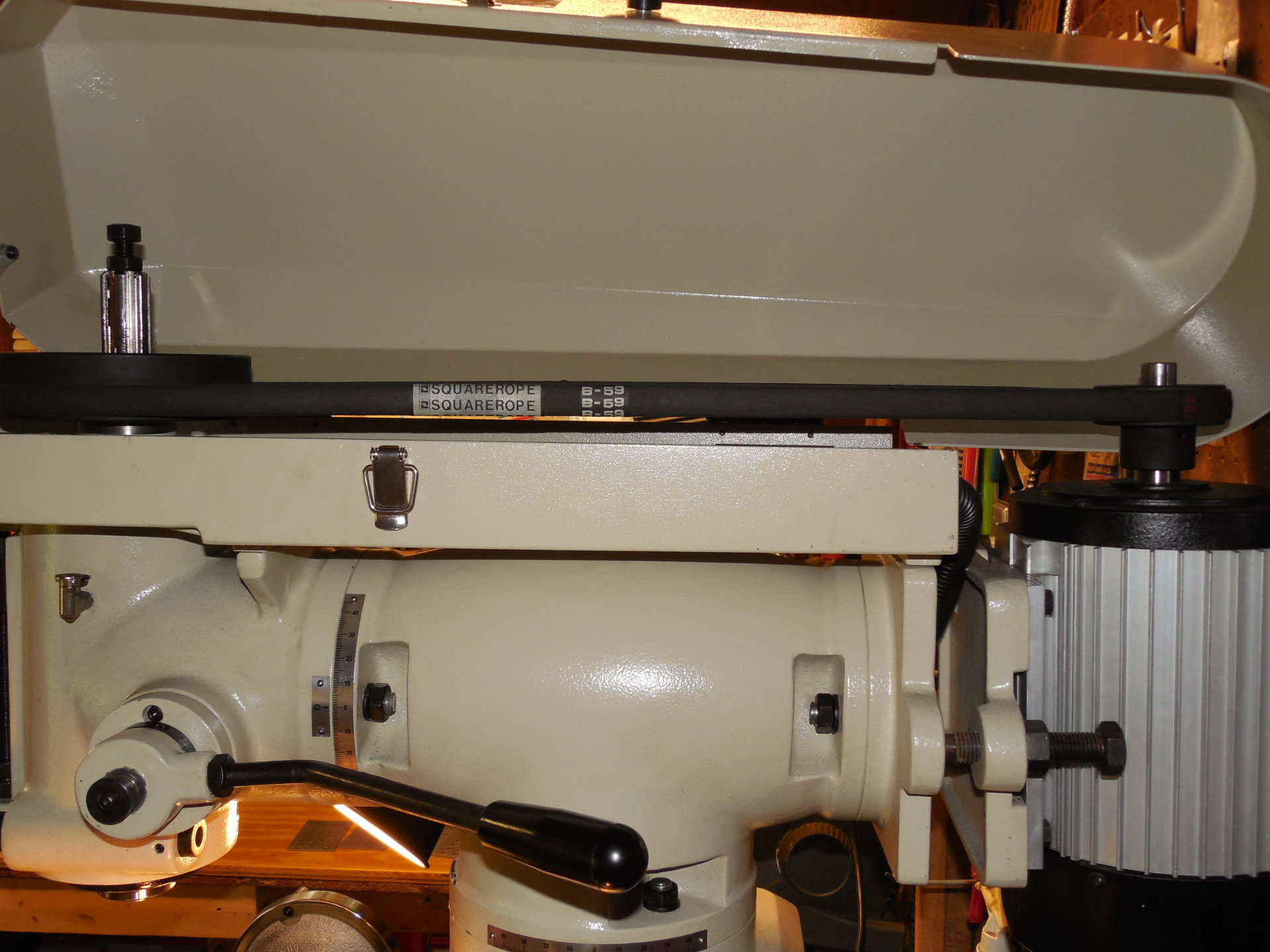Well, I have been sitting on these pictures long enough so here's a post about my new mill, a Grizzly G0678. It's a 8x30, variable-speed knee mill.
A little background. I've been shopping for a mill since the day after I bought a 1974 South Bend 10K lathe. I couldn't handle a Bridgeport-size mill in my tiny shop, but wanted something a bit bigger than the G0704 that popped-up on CL 5 miles down the road. For vintage equipment, that meant a Clausing 8530, Rockwell or maybe a Millrite. For new equipment, one of the many RF-45 clones. At the time, I was also limited on what I could get on and off the bed of my truck with an engine hoist.
So fast-forward a year and I still didn't have a mill as all the likely candidates were either too far away, just plain scrap or gone before I could make a move because of work or other commitments. Things were looking-up, however, as I was planning on getting a different truck with a hitch so I could use a trailer. This meant much easier loading and unloading, so I could now go after a slightly bigger mill, while still trying to keep it under a 1000 pounds.
In the spring, I drove up to the Muncy story to lay hands and eyes on machines. What I found was that the Taiwan machines were definitely a few rungs higher on the food chain and that I greatly preferred to operate a knee mill. So the new plan was to watch CL for another year for a small knee mill, with a Plan B of buying a new mill at Muncy when I had enough waiting.
And then a month ago Grizzly decided to close the Muncy store! It was time to poop or get off the pot. With the discounts they were offering at the store, Plan B was going to cost at least $800 more next year and I wasn't exactly seeing a ton of likely candidates on CL and Ebay. The small mills are rare and sell quickly if they aren't scrap. So this followed me home that Friday.

Here you can see the mill being pulled off the trailer. You are looking directly at the spindle (R8) as the head is tilted so it would clear the garage door while sitting on the trailer. Since this was a last minute deal, it took me a week to get the shop ready.

And here the mill is being dropped onto the mobile base. Grizzly had all their machinery in the showroom on these things and it was a freebie since I bought a floor model. It was way too squishy to leave under the mill without some work, but it sure came in handy to push it into the shop as it saved me having to use black pipe. As you can see, the base just fit inside and under the engine hoist.

And here's the mill in it's spot in the shop, doing a little work. I'm still getting used to it, but I like it so far and I'm improving the arrangement as I go. Next improvement will be in the lighting situation with a spindle LED ring.
A little more about the mill.
The G0678 is cousin of the 6x26 class of mills which are a knockoff/update of the Clausing 8520/30 family. These mills have been imported from Asia for a long time now for several different retailers. The 6x26, while having a few improvements from the Clausing like an R8 spindle, shares one of the problems of it's ancestor with a short spindle-to-table distance. Riser blocks are a common upgrade for this mill.
The 8x30 mills like the G0678, along with a slightly larger table, have the riser block function achieved by a different column/base. The maximum spindle-to-table distance of this mill is 20 inches compared to 12 inches for Grizzly's 6x26 model.
All the extra cast iron pushes the weight of this mill to just a hair under 1000 pounds. This mill was made in Taiwan.
A great feature of the G0678 is the 3-phase motor and speed control with a Yaskawa VFD.

As you can see, power transfer doesn't get much simpler: 1 belt and you don't ever need to touch it.

Here's the control panel, the red button is the spindle on/off button. At first I thought it was a little weird to use an emergency shut-off button as the off, but I guess it doesn't really matter. When your first plug-in the machine there's no visual indication on the panel of power until you twist the red button and then the pilot light on the left lights. Then when you press the green button, a relay snaps in the column where the VFD is located, the digital speed display activates and the mill starts running. Speed is selected by turning the knob and this setting sticks from one session to another. Direction control is via the knob just left of the display.
According to the manual, the speed range of the mill is 200-2250 RPM. This isn't true, as it's actually 0-2250 RPM. I almost had a heart attack when I first plugged it in and it didn't run because the knob was parked at the left stop. :) Initially I was worried about low-end torque with this setup. No worries. One of the first tests of the mill was drilling with a 3/4" taper bit. No issues, tons of torque and the bit went right through. I've done some other screwing around with larger end mills and I'm pretty sure there's plenty of power for what the mill can handle.
With no gears in the drive train and a 3-phase motor, this mill is really quiet and smooth. VFD's totally rock!

Here's a picture showing the one-shot oiler while I was screwing around the gibs. At first my major complaint with the mill was that some of the plastic oil lines were weeping, but after some work refastening the lines they seemed to have gotten better. Compared to my old SB lathe there's practically no maintenance on this machine.
Fit and finish on these imported machines seems to vary a great deal, but I've been pretty pleased with the G0678. I've had the mill for a month now and I've been pretty much been all over it with my Last Word indicator (.0005) and I can't find anything really wrong with it. Obviously you need to do the usual cleaning, setup and tramming and I spent awhile just working with the gibs. One thing that did need adjusted was the nod which ended-up being a simple fix with some shim stock between the column and head. There's a few cosmetic scratches on the table, but it moves smoothly in all directions. There's probably a few other things I can't think of right now but nothing that makes me feel I have to contact customer support.
Wrapping-up, I'm pretty happy to finally have a mill. Right now I'm planning on just settling-in and using the mill as-is for awhile, but future upgrade plans include a 3-axis DRO and x-axis power feed.